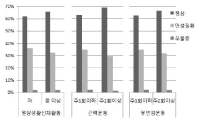
This study examined the association between physical activity (PA) and the prevalence of chronic disease and chronic depression. Additionally, the relationships between PA and health-related quality of life (HRQoL) among general population, categorized by healthy, chronic disease and depression were investigated. Cross-sectional data includes 9,739 participants (4,351 males, 5,659 females, over 19 years old) who completed physical activity, chronic disease and HRQoL questionnaires from The Fifth Korea National Health and Nutrition Examination Survey (KNHANES). Complex samples frequency, descriptive, cross-tab and logistic analysis were used. Estimated prevalence of chronic disease and depression were significantly different between PA levels and frequency. Based on odds ratios (OR) and 95% confidence intervals (CI), participating in lower levels of daily PA including less resistance and flexibility exercise were associated with an increased likelihood of chronic disease. Less frequency of resistance PA was also associated with an increased likelihood of depression. Estimated prevalence of HRQoL was different according to PA in the healthy and chronic disease populations. Adjusted OR and confidence intervals represented through lower levels of daily PA and less frequency of resistance PA were associated with an increased likelihood of poor HRQoL in the chronic disease population. No significant OR between PA and HRQoL in the depression population was observed.

Purpose The purpose of this study was to investigate the relationship between physical activity and depression according to the presence of disease. Methods A survey and basic assessment were conducted for 2,754 (Male=1,025 and Female=1,729) aged 40 and over who participated in the rural-based cohort study. The survey included physical activity, depression scale and disease preservation. The basic assessment measured height, weight, and body fat percentage. The measured data were analyzed by using logistic regression to examine the relationship between physical activity and depression prevalence. Results First, physical activity reduced the prevalence of depression by 33% and 51%, respectively, in the general population and in patients with the disease. Second, physical activity once or twice per week reduced the prevalence of depression in patients with disease by 51%, and at least three physical activities reduced the prevalence of depression by 37% in the general population and 33% of patients with disease. Third, physical activity less than 150 minutes per week reduced the prevalence of depression in patients with disease by 43%, and physical activity of more than 150 minutes and less than 300 minutes per week reduced the prevalence of 43% of the general population and 52% of patients with disease. Physical activity over 300 minutes per week had a 38% reduction in the prevalence of depression in the general population. Conclusions This study suggests that the level of physical activity suggested by the ACSM guidelines is appropriate to reduce the prevalence of depression. In addition, the patients with the disease was found to be effective with less frequency and amount of physical activity than the general person.
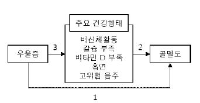
The purpose of this study was to investigate the relationship between depression and bone mineral density in Korean elder men (55+), and test mediating role of health behaviors. Korean National Health and Nutrition Examination Survey 2006-2011 data were analyzed. Bone mineral density was measured using DXA. Depression was measured by whether a participant had diagnosed depression, depressed mood lasted longer than 2 weeks, and/or suicidal thinking. Mediating health behaviors were serum vitamine D, calcium intake, high-risk drinking, endurance physical actiity, and resistance exercise. The associations among depression, health behaviors, and bone mineral density with demographic covariates were tested by linear regression, logistic regression, and path analysis. Diagnosed depression was not significantly associated with bone mineral density. Men who experienced substantial depressed mood and suicidal thinking has significantly lower bone mineral density than non-experienced counterparts. The effect of suicidal thinking on bone mineral density was mediated by endurance physical activity only. This study results suggest that elder men who experienced severely depressed mood and suicidal thinking were at-risk population for osteopenia. Also, physical activity intervention seems to be a priority to prevent osteoporosis comorbidity in depressed people.


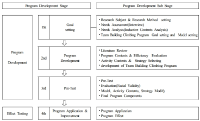
The purpose of this study was to examine the effects of team building climbing program on happiness, social development, self-esteem, stress, and depression of the youth. The participants consisted of 27 university students. The self-report instruments were compose of happiness scale, social development inventory, self-esteem scale, stress inventory, and depression scale. Qualitative data were participants’ perception about the effects of team building climbing program. Firstly, team building climbing program had positive effect on happiness of the youth, while climbing program had not significant effect on happiness of the youth. Secondly, both team building climbing program and climbing program had positive effect on social development of the youth, while team building climbing program was significant higher than climbing program in post-time. Thirdly, team building climbing program had positive effect on stress of the youth, while climbing program had not significant effect on stress of the youth. Fourthly, both team building climbing program and climbing program had positive effect on self esteem of the youth, while there were not significant between team building climbing program and climbing program in self esteem of post-time. Fifthly, both team building climbing program and climbing program had positive effect on depression of the youth, while there were not significant between team building climbing program and climbing program in depression of post-time. Limitations of this study and future implications were discussed.

PURPOSE This study aimed to analyze factors associated with physical activity (PA) in older adults based on social ecological theory. METHODS Secondary analysis was conducted using raw data from the 2021 Community Health Survey. after excluding 129 non-responses in the PA domain, a total of 74,363 individuals were included in the final analysis. A total of eight factors, including personal (level of depression, history of falls), relational (relationships with neighbors, living alone), community (satisfaction with the local community system, safety), and environmental factors (living environment, natural environment), were selected in accordance with the key points of social ecological theory. To analyze social ecological factors related to the PA of older adults, we conducted a decision tree analysis using Chi-square automatic interaction detection (CHAID). RESULTS The average PA level among older adults was approximately 136 minutes, but the mode and median were both 0 minutes. A total of 20.2% of older adults met the physical activity recommendations, while 79.8% did not. According to the first split of the decision tree, living alone was the most relevant factor associated with the PA of older adults, followed by depression and falls. Older adults living alone, with a depression score of 10 or higher, and who had experienced a fall within the past year, were least likely to meet the PA recommendations. CONCLUSIONS This study urgently suggests that PA programs should target older adults living alone, experiencing depression, and falls.
PURPOSE This study investigated the associations between mental health and physical activity with all-cause mortality in persons with disability. METHODS A total of 595 participants (39.3% women) aged 45≥ years, who participated in the Korean longitudinal study of aging (KLoSA) were included in this study. The Korean version of mini-mental state examination (K-MMSE) and the center for epidemiologic studies depression scale (CES-D) were used to assess cognitive impairment and depressive symptoms, respectively. The participants were classified into active and inactive groups based on physical activity of 150 min/week. Cox’s proportional regression analyses were used to determine the hazard ratio (HR) and 95% confidence interval (CI) of mental health and physical activity relating to all-cause mortality. RESULTS During the follow-up period (11.8±4.1 years), a total of 218 (36.6%) deaths occurred from all-causes. Participants in the inactive group had significantly higher cognitive impairment (p =0.046), depressive symptoms (p =0.001), and all-cause mortality (p=0.037) than those in the active group. Compared to participants in the normal (HR=1), cognitive impairment (HR=2.229, 95% CI=1.645-3.020, p<0.001), and depressive symptoms groups (HR=1.542, 95% CI=1.136-2.091, p<0.001), those in the inactive group had significantly higher HR related to all-cause mortality. However, in the active group, cognitive function and depressive symptoms were not associated with all-cause mortality. CONCLUSIONS The current finding suggests that the promotion of physical activity may play an important role in preventing premature death from all-causes in persons with disability, especially among those with mental health problems.

It has been reported that continuous exercise and bright light exposure improved resistance to stress and reduced depression and anxiety, which were attributed to enhancing neurotransmitter GABA exocytosis and stimulating neurogenesis. In this study, the effects of treadmill exercise and bright light exposure on the expression of GABAAreceptor activity, calcineurin and calcineurin calcium signaling pathway-depended NFATc4, neurogenesis-related protein Cdk5 and specific regulator factor of Cdk in neurogenesis p35 in the hippocampus of rats were investigated by western blot assay. The expression of GABAAreceptor, Cdk5 and p35 significantly increased in the exercise+light group compared to the control group and the light group. The expression of KCC2 and NFATc4 significantly increased in the exercise+light group compared to all the other groups. And the expression of calcineurin significantly increased in the exercise+light group compared to the control group. The overall results showed that exercise and bright light stimulated neurogenesis of the hippocampus in rats and had positive effects on improving the brain neuronal function.


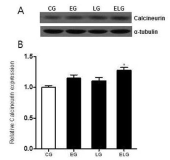
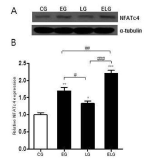
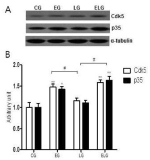
Purpose The valuable impacts of exercise-intervention in diverse type of cancer patients were rationally well-prescribed, though many experimental and review researches already performed in this fields. Generally, cancer-related fatigue and pain remains one of the most prevalent problems for cancer populations. Therefore, exercise has become increasingly significant in cancer prevention and progression. The purpose of this recent study was to analyze the combined exercise program on cancer-related fatigue, pain, quality of life and cancer prognosis in diverse type of cancer patients. This study analyses the safety and feasibility of exercise intervention in diverse stages of cancer patients such as early stage, advanced stage and even metastatic periods in cancer populations. we also wanted to know the impacts of dose-response trial of aerobic and resistance exercise on quality of life in cancer survivors. Methods we conducted a comprehensive PubMed/MEDILINE electronic database from Jan 2015 to August 2020. The reference lists of eligible experimental research articles and relevant systemic review articles were checked. Inclusion criteria were adult cancer survivors from randomized controlled trials performing well-tailored exercise intervention programs to diverse type of cancer patients, Using predefined search items ‘exercise-intervention, cancer & immunology’. Based on reference search, more than 100 articles were identified whereas 30 research papers met the inclusion criteria and were well connected with exercise-intervention and cancer progression. we analyzed the connections between physical exercise and cancer intervention in the main text. Results Moderate to vigorous exercise (aerobic and resistance exercise) revealed to decreased level of cancer-related fatigue, pain, and cancer-related symptoms, however increased level of sleep quality, activities of daily living, exercise performance and health- related quality of life. Exercise intervention reduced pro-inflammatory markers and oxidative stress as well as insomnia, fatigue, pain symptoms whereas it enhanced the antioxidant systems and immune functions. In addition, home-based aerobic physical exercise might enhance muscular strength and quality of life in many types of cancer survivors. Psychological intervention also effective for reducing cancer-related fatigue and pain during and after cancer treatment. they might be the much better intervention than available pharmaceutical options. we believe that it is the related mechanisms of immune cell mobilization and activation such as NK cells which is induced by the activation of sympathetic system during and after physical exercise. Conclusion According to the aforementioned results, it was concluded that implementation of exercise intervention appear to be the best non-pharmaceutical interventions for cancer populations, and also revealed to be safe and feasible in early and advanced stages, although not in the metastatic periods. Sometimes, psychological intervention such as mindfulness-based stress reduction (MBSR) might be useful in reducing anxiety, depression, fatigue, pain and enhancing quality of life, quality of sleep for cancer populations. we can conclude, exercise-intervention might not just be prevention effect but might be therapeutics, however more studies are urgently needed to confirm the exercise intervention on the NK-receptors activation and immune connection of cancer populations.
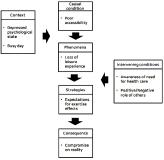
Purpose The purpose of this study is to investigate the alienation and the overcoming process of the physical activity participation of people with Adventitious Visual Impairment(AVI) Methods 21 Adults with AVI were recruited and one on one semi-structured interview was conducted. Ground theory was used to analyze the data. Member check, peer debriefing was conducted to enhance the trustworthiness of this study. Results As a result, a total of 203 concepts were derived. This consisted of 21 subcategories and the common themes of the subcategories were categorized into nine categories. Specific results are as follows. First, the physical activity of people with AVI was directly affected by the sports facilities, physical activity programs, and professional instructor. This causal condition resulted in the loss of leisure experience in the context of the busy daily life and the depressed psychological state. Second, due to the perceived need of health care and the positive involvement of others, people with AVI came to expect the effect of exercise. Third, people with AVI participated in physical activity again as a tool to achieve the purpose of health improvement. This type of physical activity has a limitation that it can not guarantee the continuity of physical activity due to the limitation that it does not contain autonomy and interest of people with AVI. Conclusions Based on these results, the following suggestions were made. First, it is necessary to improve the environment for ensuring participation in physical activity of people with AVI. Moreover education and promotion of the effects and values of the exercise should be carried out for people with AVI and their guardians. Second, it is necessary to diversify physical activity types and reconstruct existing exercise programs.
